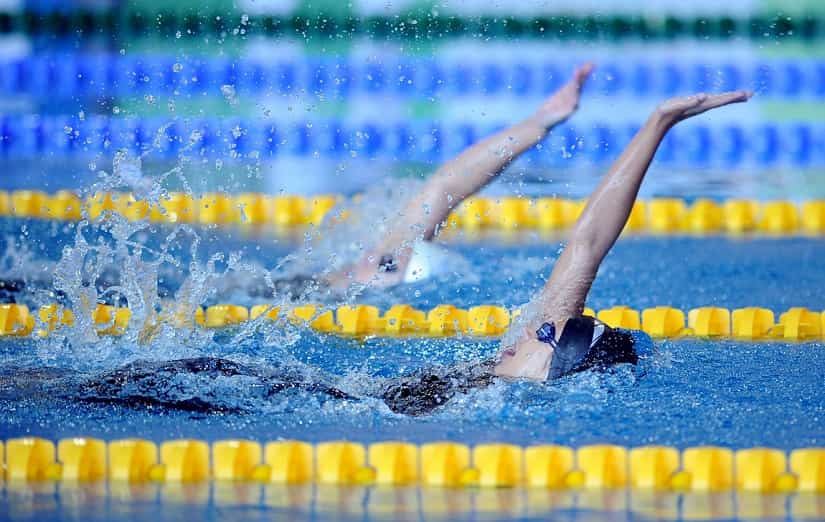Coaches and programs have long used attendance boards and log books to encourage better attendance. There’s a good reason why—they work.
From the swimmer who shows up late, to the swimmer who leaves early, to the swimmer who doesn’t show up at all, absenteeism and missing parts of the workouts is something coaches and teams all struggle with from time to time.
Swim practices are interrupted, main sets aren’t swum to completion, and the cry of “But he got out early, so why can’t we?” echo across the lane lines.
The problems that happen with shaky attendance and uneven workout completion are obvious:
- Coaches spend more time trying to correct absenteeism than working with directly with athletes.
- Swimmers who miss workouts regularly swim poorly in competition and then wonder what happened.
- Practices are disrupted, not completed, or not done at all.
In other words, all sorts of moldy sogginess.
While there is always going to be the random case for missing practice, it becomes a problem when it becomes habitual, and more importantly, infects the rest of the team or group with low standards.
How to Improve Group and Team Attendance
Recently while on deck at one of the pools I swim at I was performing my usual set of arm swings pre-swim, when I noticed an attendance sheet on the corkboard for one of the local swim teams.
Blue stars for the swimmers who made the whole week, and checkmarks for respective AM and PM sessions. In an age where we seem to be trying to tech the chlorine out of everything from our steps to our stroke rate, it was refreshing to see that some old school tools stand the test of time.
#1: The Attendance Board
Your classic attendance board, where each swimmer has their names and a series of checkmarks (or blank spaces) beside each practice, is stunningly effective at improving punctuality and attendance.
One study performed in the 1970’s with a team from Nova Scotia, Canada, sought to figure out how effective an attendance board, made publicly available and freely visible on the pool deck, would fare in helping encourage better attendance and even effort in practice.
Each day, the group, composed of 32 swimmers between the age of 9 and 16 would write out a check mark each time they attended and completed a practice. The top of the board was also reserved for those with the best attendance.
The attendance of the group was recorded in this manner for two months, with lateness and get-out-of-earlyness tallied as well.
And the results?
- Absenteeism went down by 45%
- Late arrivals was reduced by 63%
- And those swimmers who always seem to need to get out early? Completely evaporated. 100% suppressed.
Some other notes on this particular study:
- Follow-up with the team and coaches found the attendance board to continue to have a positive effect on attendance.
- Swimmers were in charge of writing out their own attendance. Two of the older athletes on the team supervised the use of the board.
- The coaches, outside of explaining how the board worked, did very little in having to follow up with attendance.
- There was the option of make-up practices on Sundays and in the AM for swimmers who missed workouts.
- Feedback from the coaches and swimmers noted that the reasons attendance improved so drastically was social; the peer pressure, being recognized for consistent attendance, and the praise and approval that came with showing up and doing the workouts played pivotal roles.
#2: The Log Book
It probably won’t come as a big surprise that logging workouts helps get swimmers be more consistent in the water.
There are a bunch of reasons that writing out swim practices can help swimmers be better in practice. From helping to develop self-awareness, to setting better goals, to keeping you motivated during those long stretches of hard training.
But, as it turns out, keeping a log book can also help swimmers make more workouts and show up on time as well.
Another study of swimmers, this time a group of 26 Canadian intercollegiate swimmers, had them use a training log to write out their workouts when they got home from practice for just under a month.
- Attendance and punctuality improved, particularly over the first 17 days of self-monitoring with the log books.
- The swimmers also became more likely to analyze the quality of their training, which indicated an increase in self-awareness and personal accountability.
The Takeaway
Chasing excellence in the pool is tough stuff. The journey is fraught with doubt, setbacks, injury, and the occasional heartbreaking DQ.
When swimmers show up to practice late, get out early, or otherwise miss sessions, they are not only hamstringing their own success and making things exponentially harder on themselves, they are also sabotaging the team culture.
Whether you are aspiring to go to the Olympics, make your high school team, or just shave a second off your PB, success in the pool, as with just about everything else in life, starts with showing up.
More Stuff Like This:
The #1 Reason Age Group Swimmers Should Track Their Swim Practices. Age group swimmers are learning a lot as they progress through the ranks. Here’s how journaling their workouts will help teach one of the most important lessons swimming has to offer.
6 Benefits of Mental Training for Swimmers. Feeling inspired to take your swimming to the next level? Here are 6 benefits of mental training for competitive swimmers.














